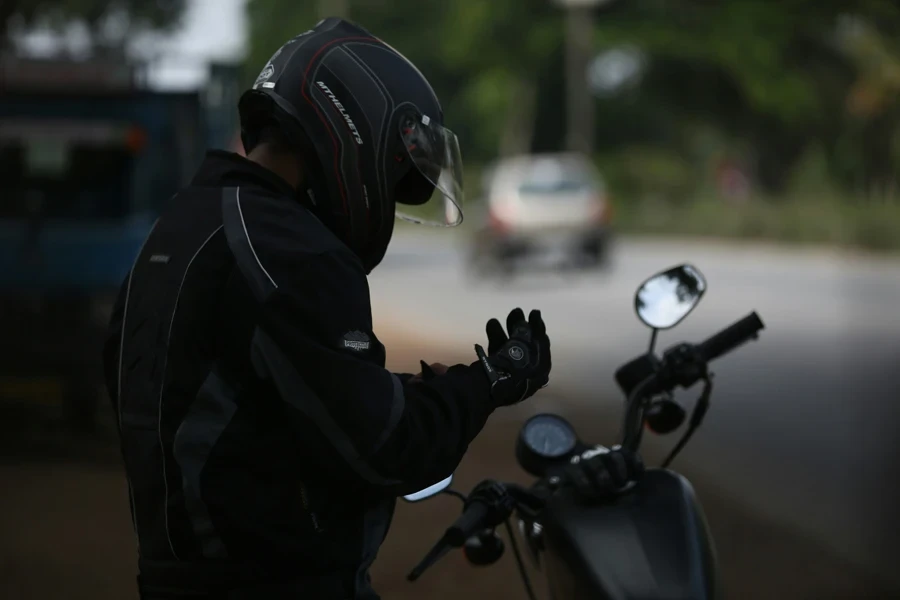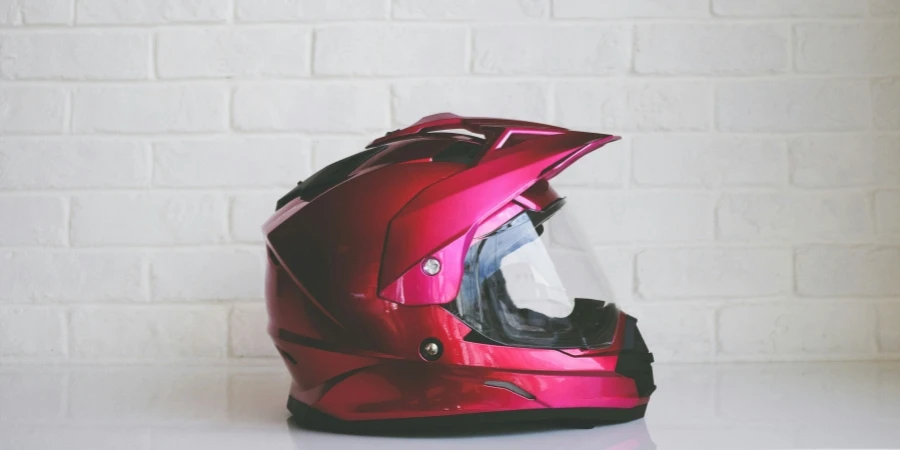Table of Contents
○ Introduction
○ Market overview
○ Key technology and design innovations
○ Top-selling models driving market trends
○ Conclusion
Introduction
A helmet is one of the essential protective equipment worn on motorcycles with a view of protecting the head in the event of an accident. Wearing helmets is a great way of reducing the number of deaths and severe injuries that could be caused by an accident, and therefore, helmets are an essential part of a rider’s gear. The current growth of the motorcycle helmet market can be attributed to the enhanced technology used and the campaign for road safety. Advancements in material, style, and use fuel this growth to raise the rider’s comfort, safety, and enjoyment. Also, increased safety measures and increased motorcyclists globally are some factors boosting the market for quality helmets. This blog post aims to review the current and upcoming trends in the market, the new technologies that are being incorporated into helmets, and which models are currently on the market and leading the sales to understand why, for many riders, a helmet is more than just a protective gear.

Market overview
Selecting the right motorcycle helmet for a good riding experience and safety is important. According to recent estimates by Zion Market Research, the expected compound annual growth rate (CAGR) is likely to be 6.5%; the market for motorcycle helmets is rapidly expanding due to advancements in technology and changes in consumer attitudes. This strong growth supports the need to invest in quality helmets with features like waterproofing and breathability, lightweight, and better support systems. With new materials being used and new design elements being built in, riders should be able to look forward to a helmet that offers the best protection and comfort, making every ride safer and more comfortable.
Maximize Market Research reported that the market for motorcycle helmets has been growing globally and was estimated to be worth $2.68 billion in 3023. This market is expected to grow to US$3.8 billion by 2030 due to the ever-rising sales of motorcycles, awareness campaigns on road safety, and the enhanced stringency of laws implementing helmets. The growth of motorcycle sales, especially in developing countries, has caused a rise in the demand for helmets. The leading growth areas in this market are those with high motorcycle usage and a strong production base, including the Asia-Pacific, North America, and Europe. These areas underline the need to acquire quality helmets that can withstand several tests because safety is a major concern, hence promoting advancement and quality in the production of helmets.

Key technology and design innovations
Waterproof and breathable materials
Contemporary motorcycle helmets are designed from fabrications that are waterproof and breathable. Such innovations include the GORE-TEX membranes, which offer good protection against water and allow the passage of ventilation air. This dual functionality means that the riders are protected from rain and any other inclement weather. When incorporated in the helmets, these membranes are suitable for use in long trials characterized by natural exposure to varying weather conditions. These materials have dramatically changed helmet designs, making the helmet more adaptable and convenient for daily activities. The helmets also come with interior linings that have moisture-absorbing qualities where the sweat is drawn away from the rider’s skin, providing cool and dry headwear.
Lightweight and durable construction
The advancement in helmet construction materials has produced lighter and more durable helmets. Synthetic leather and EVA (ethylene-vinyl acetate) midsoles are the main materials that influence this progress. Synthetics offer the ruggedness of genuine leather at an insignificant weight, which is important to helmets, especially for long use. EVA midsoles allow better shock absorption, decreasing the rider’s neck and shoulder strain. These materials are sewn together to form protective helmets and are comfortable for long hours of use. There are no sacrifices in terms of protection made with the loss of weight; those lightweight materials are designed to absorb a lot of energy in the event of an accident.

Support and stability enhancements
Improvements in some of the support and stability are essential in increasing the safety of the riders. Modern helmets are designed with highly improved support systems that give riders stability during rides. Such systems include a secure chin strap, comfortable cushioning, and an adjustable fit mechanism that guarantees the helmet will not shift around. Safety features include shock absorption that allows the helmet to reduce forces applied to a rider’s head during an accident. Now, helmets utilize different densities of EPS (expanded polystyrene) as liners for improved protection. All these enhancements in support or stability go hand in hand in averting head injuries and enhancing general comfort while riding a motorcycle.
Eco-friendly designs
Companies have been putting in efforts to include sustainability in the production of helmets. More and more brands are consciously using environmentally friendly materials. Helmets made of recycled material or by using eco-friendly processes are common. Such helmets do not limit themselves to safety and functionality but are ecologically sustainable products for people. They are also using biodegradable poly bags, which can be broken down easily and use the least energy in their production. The change in the direction of helmet manufacturing towards sustainability is not isolated but responds to a general tendency towards the efficiency of products available in the consumer market.
Custom fit and comfort technologies
A perfect fit and maximum comfortability are the primary goals of any helmet. Current models of helmets can be adjusted to fit the individual wearer and thus not only improve comfort but also safety. Some of the examples of such innovations include custom insoles and adaptive lacing systems. Such technologies make the helmet form the shape of the head of the rider in a way that makes it fit well. Also, the helmets have been designed with refined vents and air intake systems to provide airflow to the rider’s head during the ride. It has an adjustable cheek pad and comes with easily removable liners for a better fit and easier cleaning for improved comfort and hygiene of the helmet. These comfort technologies are very important in improving the comfort of riding, making long-distance riding easier and less exhausting.

Top-selling models driving market trends
ALFA outdoor models
ALFA Outdoor has grown to become one of the biggest makers of motorcycle helmets, with their best-selling models being the Eide Advance GTX, Gren Advance GTX, and Juvass A/P/S GTX. These helmets are known to have been manufactured with high quality and come with many features that make them efficient in use, safe, and comfortable. The Eide Advance GTX has a great protective feature and a ventilation system, making it especially suitable for long riding. The Gren Advance GTX provides reliability and strength in construction with its lightweight design, which is ideal for everyday use. The Juvass A/P/S GTX is made for the toughest conditions to give the rider the best control and safety.
Popular brands and their offerings
Some of the biggest companies in the motorcycle helmet industry provide customers with new and high-quality products. The following brands are most popular among consumers: New Balance, Adidas, Merrell, Salomon, and Oboz. These brands have effectively embraced modern materials and technologies to improve the helmets’ durability, comfort and usability. For instance, Merrell’s Moab 2 Mid Waterproof boots have received accolades for their ability to provide both support and flexibility. Salomon’s X Ultra 3 GTX has a lightweight construction but great grip and stability. Oboz pays a lot of attention to comfort and fit and employs the use of data to develop helmets that can be used in different riding styles and for various head shapes.

Performance features
One thing that has become very popular, especially in the best-rated motorcycle helmet models, is the performance features. The outsole of the helmets has to be designed to provide a firm grip on the ground and give the user more balance and safety. The Midsole should contain shock absorption technologies to minimize the pressure on joints and thus make long rides comfortable. Other features, such as quick-lacing systems and adjustable straps, enhance comfort because one can easily adjust when on the field. The fabric must be breathable, and the lining must be moisture-wicking to enhance the rider’s comfort. These are the performance features that are crucial for those riders who are looking for the best helmet performance and reliable operation.
Innovative technologies
The market for motorcycle helmets is still growing and developing, and new technologies are being incorporated into it. This has been achieved through synthetic leathers, EVA midsoles, and better helmet-making textile advances. It is possible to see manufacturers and brands implementing sustainable strategies, including recycling materials and green production. Brands are trying to design helmets for multiple purposes, such as everyday rides and in the rough terrains of mountains. These innovations not only improve the usability and comfort of the helmets but also enforce the current trend of sustainable products. Through the continued improvement of helmet technology, riders can get the best, safest, and most comfortable helmets for their respective uses.
Conclusion
Picking the correct motorcycle helmet is critical in improving the safety and enjoyment of the ride. The growth in the market is attributed to the advancement in technology and changes in consumer tastes and preferences, which call for a quality helmet. Thanks to the developments in material, style, and eco-friendliness, modern helmets provide the highest level of safety and comfort so that every ride is safer and more pleasant. With the advancement of the industry, riders will be able to get better, improved, and convenient helmets that are safe and suit their interest. For everyday use or spirited rides, choosing the right helmet can make a big difference in the safety and enjoyment of the rider.




